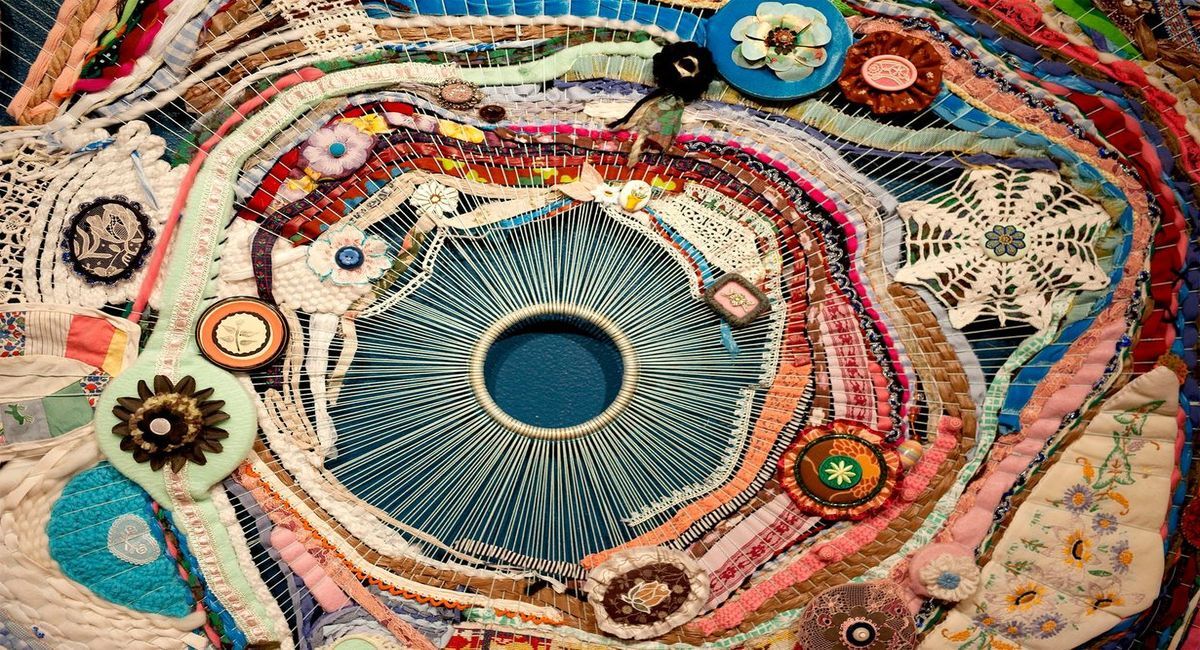
Fiber art is a fascinating world where creativity meets craftsmanship. But what exactly is fiber art? Fiber art involves creating works of art using natural or synthetic fibers, such as yarn, fabric, and thread. This art form spans various techniques, including weaving, knitting, crocheting, and embroidery. Artists in this field often push boundaries, blending traditional methods with modern innovations. Did you know that fiber art has roots dating back thousands of years? From ancient tapestries to contemporary installations, fiber art has evolved dramatically. Whether you're a seasoned artist or a curious beginner, these 27 facts about fiber art will inspire and inform you.
What is Fiber Art?
Fiber art is a unique form of creative expression that uses natural or synthetic fibers, such as yarn, fabric, and thread. This art form includes various techniques like weaving, knitting, crocheting, and embroidery.
- Fiber art dates back thousands of years, with ancient civilizations using fibers for both practical and decorative purposes.
- The term "fiber art" became popular in the 1960s and 1970s during the art movement that emphasized the use of textiles in fine art.
- Fiber artists often use traditional techniques in innovative ways, blending old and new methods to create unique pieces.
Techniques Used in Fiber Art
Different techniques in fiber art allow artists to create a wide range of textures and patterns. Each method has its own history and set of skills.
- Weaving is one of the oldest fiber art techniques, involving interlacing threads to create fabric.
- Knitting uses two needles to loop yarn into a series of interconnected loops, forming a stretchy fabric.
- Crochet involves using a single hook to pull yarn through loops, creating intricate patterns and textures.
- Embroidery adds decorative designs to fabric using needle and thread, often incorporating beads and sequins for added flair.
- Macramé involves knotting cords or strings in patterns to create decorative items like wall hangings and plant holders.
Materials Used in Fiber Art
Fiber artists use a variety of materials, each offering different textures, colors, and properties. The choice of material can significantly impact the final piece.
- Wool is a popular choice for its warmth and versatility, often used in knitting and felting.
- Cotton is a durable and breathable fiber, commonly used in weaving and embroidery.
- Silk, known for its sheen and softness, is often used in high-end embroidery and weaving projects.
- Synthetic fibers like acrylic and nylon offer durability and vibrant colors, making them popular in modern fiber art.
- Natural fibers like hemp, jute, and bamboo are eco-friendly options gaining popularity among contemporary fiber artists.
Cultural Significance of Fiber Art
Fiber art holds cultural significance in many societies, often reflecting traditions, beliefs, and social status.
- In many Indigenous cultures, fiber art techniques are passed down through generations, preserving cultural heritage.
- Traditional Japanese fiber art, such as sashiko embroidery and kumihimo braiding, has deep historical roots and symbolic meanings.
- African textiles, like Kente cloth and Mudcloth, are rich in symbolism and often used in ceremonies and rituals.
- In Peru, the ancient art of weaving is still practiced today, with intricate patterns that tell stories and convey cultural identity.
- Fiber art played a significant role in the feminist art movement, challenging traditional notions of art and craft.
Modern Fiber Art
Modern fiber art continues to evolve, with artists pushing boundaries and experimenting with new techniques and materials.
- Contemporary fiber artists often incorporate mixed media, combining fibers with other materials like metal, wood, and glass.
- Fiber art installations have become popular in galleries and public spaces, creating immersive experiences for viewers.
- Digital technology has influenced fiber art, with artists using computer programs to design patterns and control looms.
- Sustainable practices are becoming more common in fiber art, with artists using recycled materials and eco-friendly dyes.
- Fiber art has found a place in fashion, with designers creating unique, handcrafted garments and accessories.
Fiber Art in Everyday Life
Fiber art is not just for galleries and museums; it can be found in everyday items and activities.
- Quilting, a popular fiber art form, combines layers of fabric to create functional and decorative blankets.
- Handmade rugs and tapestries add warmth and personality to homes, showcasing the artist's skill and creativity.
- Fiber art can be therapeutic, with activities like knitting and crocheting providing relaxation and stress relief.
- DIY fiber art projects have gained popularity, with people creating their own clothing, home decor, and gifts.
The Final Stitch
Fiber art isn't just about creating beautiful pieces; it's a journey through history, culture, and personal expression. From ancient tapestries to modern installations, fiber art has evolved, yet it remains a powerful medium for storytelling. Whether you're a seasoned artist or a curious beginner, there's always something new to learn and explore in this vibrant field.
Remember, fiber art isn't limited to traditional techniques. Experiment with different materials, try new methods, and let your creativity flow. The possibilities are endless, and each piece you create adds to the rich tapestry of fiber art history.
So, grab your needles, threads, or looms, and start your next project. Who knows? You might just create the next masterpiece that inspires future generations. Keep stitching, weaving, and creating—fiber art's magic is in your hands.
Was this page helpful?
Our commitment to delivering trustworthy and engaging content is at the heart of what we do. Each fact on our site is contributed by real users like you, bringing a wealth of diverse insights and information. To ensure the highest standards of accuracy and reliability, our dedicated editors meticulously review each submission. This process guarantees that the facts we share are not only fascinating but also credible. Trust in our commitment to quality and authenticity as you explore and learn with us.
